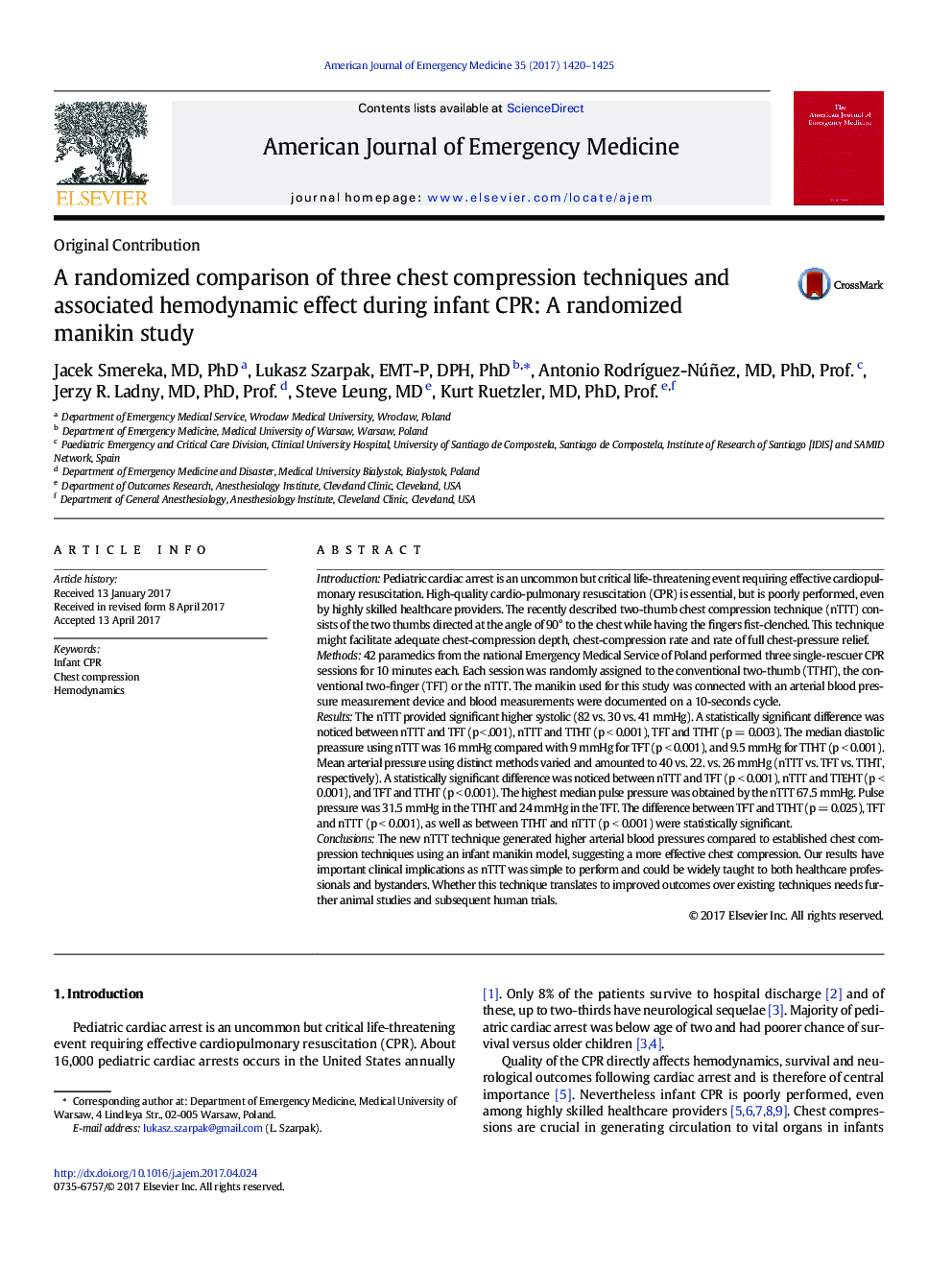| کد مقاله | کد نشریه | سال انتشار | مقاله انگلیسی | نسخه تمام متن |
|---|---|---|---|---|
| 5650422 | 1588076 | 2017 | 6 صفحه PDF | دانلود رایگان |

IntroductionPediatric cardiac arrest is an uncommon but critical life-threatening event requiring effective cardiopulmonary resuscitation. High-quality cardio-pulmonary resuscitation (CPR) is essential, but is poorly performed, even by highly skilled healthcare providers. The recently described two-thumb chest compression technique (nTTT) consists of the two thumbs directed at the angle of 90° to the chest while having the fingers fist-clenched. This technique might facilitate adequate chest-compression depth, chest-compression rate and rate of full chest-pressure relief.Methods42 paramedics from the national Emergency Medical Service of Poland performed three single-rescuer CPR sessions for 10 minutes each. Each session was randomly assigned to the conventional two-thumb (TTHT), the conventional two-finger (TFT) or the nTTT. The manikin used for this study was connected with an arterial blood pressure measurement device and blood measurements were documented on a 10-seconds cycle.ResultsThe nTTT provided significant higher systolic (82 vs. 30 vs. 41 mmHg). A statistically significant difference was noticed between nTTT and TFT (p < .001), nTTT and TTHT (p < 0.001), TFT and TTHT (p = 0.003). The median diastolic preassure using nTTT was 16 mmHg compared with 9 mmHg for TFT (p < 0.001), and 9.5 mmHg for TTHT (p < 0.001). Mean arterial pressure using distinct methods varied and amounted to 40 vs. 22. vs. 26 mmHg (nTTT vs. TFT vs. TTHT, respectively). A statistically significant difference was noticed between nTTT and TFT (p < 0.001), nTTT and TTEHT (p < 0.001), and TFT and TTHT (p < 0.001). The highest median pulse pressure was obtained by the nTTT 67.5 mmHg. Pulse pressure was 31.5 mmHg in the TTHT and 24 mmHg in the TFT. The difference between TFT and TTHT (p = 0.025), TFT and nTTT (p < 0.001), as well as between TTHT and nTTT (p < 0.001) were statistically significant.ConclusionsThe new nTTT technique generated higher arterial blood pressures compared to established chest compression techniques using an infant manikin model, suggesting a more effective chest compression. Our results have important clinical implications as nTTT was simple to perform and could be widely taught to both healthcare professionals and bystanders. Whether this technique translates to improved outcomes over existing techniques needs further animal studies and subsequent human trials.
Journal: The American Journal of Emergency Medicine - Volume 35, Issue 10, October 2017, Pages 1420-1425